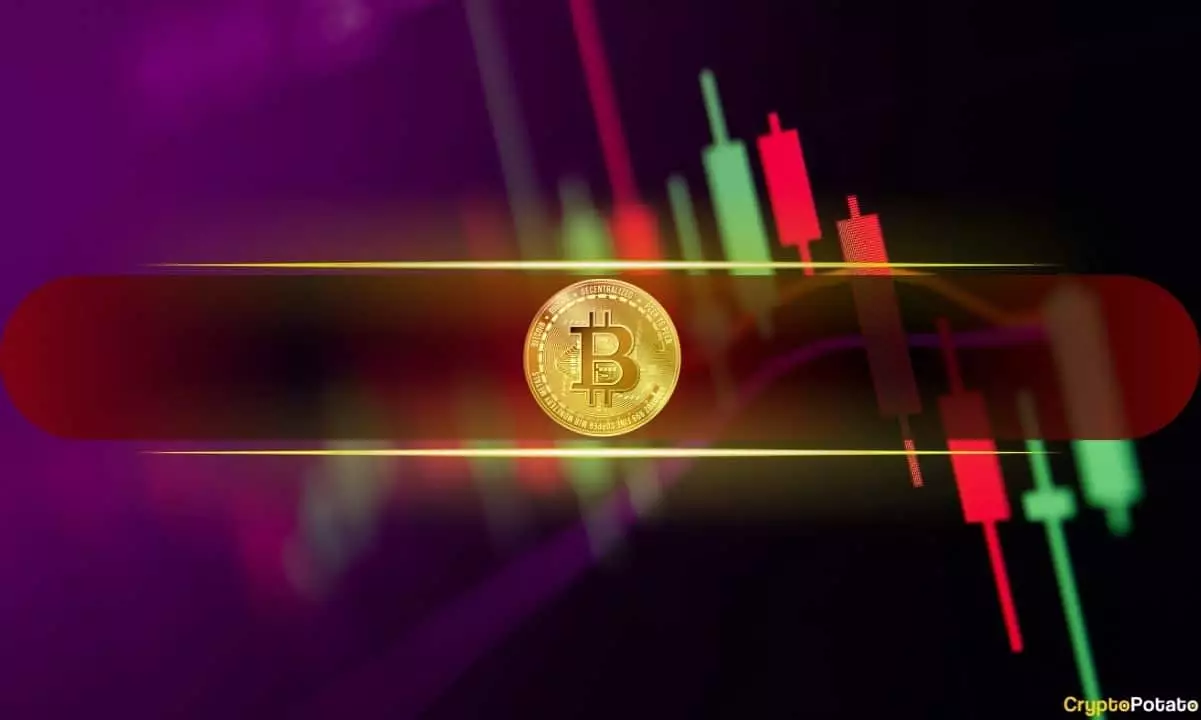The cryptocurrency market is not merely experiencing a downturn; it is grappling with existential threats posed by a confluence of geopolitical and economic pressures. Bitcoin, the flagship of cryptocurrency, has suffered nearly a 3% drop just today. Other major players—Ethereum, Solana, and Cardano—are dancing in the red zone, showcasing declines that evoke anxiety among traders. This isn’t just a passing storm; it hints at a deeper malaise and fissures within the crypto ecosystem.
Upon closer inspection, Bitcoin’s price decline appears particularly haunting, plummeting from a respectable $106,000 to an alarming intraday low of $102,400. Such fluctuations are alarming, and they reflect the fragility of the market. The patterns in trading reveal a heartbreaking truth: investors are not just witnessing a momentary blip but an unsettling trend. Market confidence is dwindling, revealing vulnerabilities that institutions might exploit.
Institutional Powers: The Silver Lining?
There is a silver lining amid this chaos: many analysts believe that Bitcoin’s current trading range near $100,000 reflects strong institutional support rather than mere retail enthusiasm. Such a foundation may lend Bitcoin a sense of legitimacy, primarily because institutions are often less likely to abandon their investments in turbulent times. Their presence suggests that Bitcoin isn’t merely a speculative investment; it embodies a more nuanced financial instrument that resists impulsive market whims.
Yet the question remains: what motivates these institutional actors? Are they genuinely committed to the long-term prospects of cryptocurrencies, or are they simply riding the waves of volatility for short-term gains? While the institutional dominance is something to be celebrated, it also casts a shadow over the often-feeble retail participation. For the crypto space to achieve its democratic ideals, we must question the power dynamics at play.
Geopolitical Turmoil: An Unwelcome Impact
The ripple effects of the ongoing conflicts, such as the tensions between Israel and Iran, only exacerbate the already precarious market conditions. Oil prices surge amidst global uncertainty, further destabilizing stock markets and consequently impacting digital currencies. This instability reveals the interconnectedness of our economic systems and provokes a broader conversation about market resilience in the face of turmoil.
The situation underscores a tremendous disparity in fortunes within the cryptocurrency ecosystem. As Bitcoin’s dominance rises—its share of the market increasing more than 1%—other altcoins experience more pronounced losses. This pattern indicates that Bitcoin is transcending its role as merely the market leader and becoming a refuge in times of crisis. As altcoins dive deeper into negativity, it raises concerns: can they recover when Bitcoin itself is not in an upward trajectory?
Concluding Thoughts: Time for Reform?
Overall, the current state of cryptocurrency is alarming but illuminating. It reveals both enduring strengths and glaring weaknesses in the market. The overreliance on institutional participation reveals a potential crisis of innovation, stifling the democratization of financial systems that the blockchain promised. A rethinking and restructuring may be in order for the cryptocurrency market to reclaim its original ethos while navigating the realities of a turbulent world. It’s a pivotal moment—one that requires bold thinkers to shape the future of digital currencies in an ever-changing economic landscape.















Leave a Reply